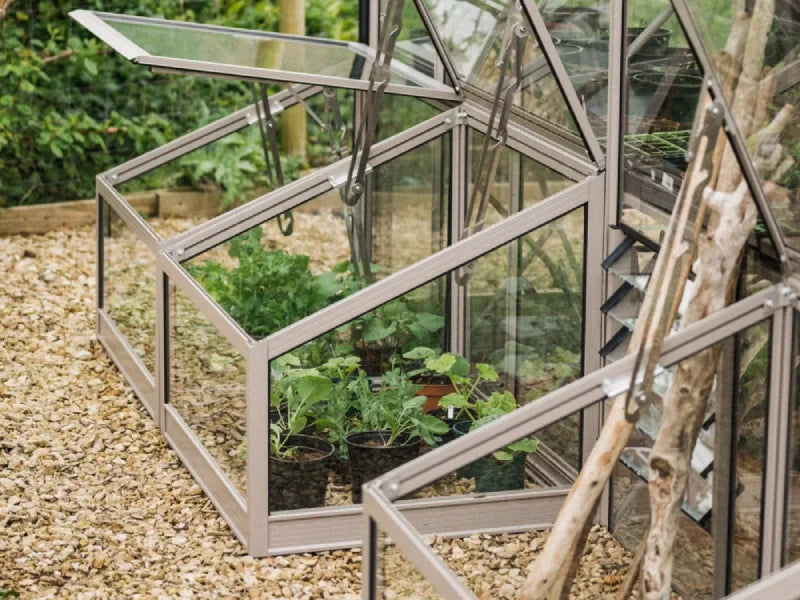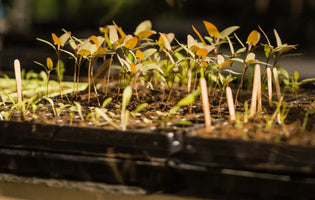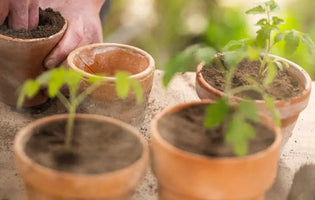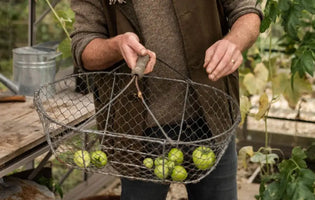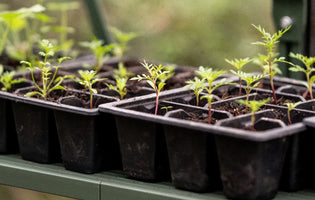Request a Brochure
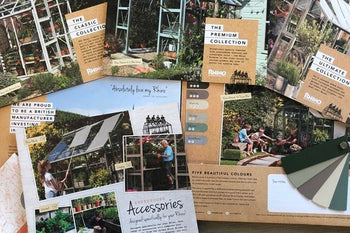
Did you know that with proper care and maintenance the lifespan of your garden tools could be doubled, if not tripled?
Whether you have been gifted a fresh set of gardening tools, or you are wondering how to clean garden tools properly, keep reading, as we share with you our expert tips on extending the lifespan of your garden tools, through proper cleaning and disinfecting.
Quick Links
How to clean your garden tools
One of the easiest ways to extend the lifespan of your garden tools is to simply keep them clean. Sounds simple, but more times than not garden tools are often forgotten about when it comes to maintaining your garden.
But how exactly do I clean my garden tools, we hear you ask. Read on as we share with you our expert advice on day-to-day cleaning, removing stubborn mud and rust and how to disinfect your beloved tools.
Rinse and repeat.
After every use, make sure you are rinsing off your garden tools, ensuring that your tools are clean and free from dirt, mud, and debris from your garden. Rinsing your tools after use will not only keep your tools looking sparkling clean, but can also reduce the risk of contamination and spread of diseases within your garden. Plants are at risk of taking in diseases when they come in contact with tools that have touched infected crops, so minimise the risk of pests and diseases in your plants by simply giving your tools a thorough rinse between uses.
After rinsing, ensure that your tools are thoroughly dried off, we recommend using a microfiber cloth, before you store them away for their next use as this will minimise the risk of rust forming on your tools.
Stubborn Dirt and Rust Removal
Let’s face it, we all have that one garden tool that has seen better days. Whether it’s caked in dried soil and mud, rust, or just looking past its best, deep cleaning your garden tools can give your old tools a new lease of life.
Here we’ll share with you the secret to removing dried mud and rust from your garden tools, and more often than not the materials needed will already be in your house.
What you’ll need:
- A stiff wire brush or steel wool
- White vinegar
- Warm soapy water
- A bucket (or anything that is large enough to soak your tools in!)
- Clean microfiber cloths
- Linseed oil, multi-purpose oil or WD-40.
How to clean rust from your garden tools:
- Using a stiff wire brush or steel wool, begin dry brushing and scrubbing the metal surfaces of your tools in circular motions. This should remove the excess dried mud and dirt from your tools and begin to breakdown the stubborn rust prior to soaking.
- Fill your bucket, or whatever vessel you have chosen, with a mixture of equal parts of warm soapy water, we recommend your bog standard washing up liquid, and white vinegar.
- Submerge your tools in your solution, ensuring that any tools with moving parts, such as shears or pruning cutters, are disassembled to ensure a thorough clean.
- Leave your tools to soak in your solution for a few hours, at Rhino Greenhouses Direct we leave our tools to soak overnight, to loosen any stubborn rust from our tools.
- After soaking, go back in with your stiff wire brush or steel wool, and scrub your tools until the rust and dirt is removed.
- Once the rust is removed, submerge your tools in fresh soapy water and rinse thoroughly to ensure the solution is removed from your tools.
- Thoroughly dry your tools with a clean microfiber cloth and lightly coat the metal blades of your tools in linseed oil, multi-purpose oil or WD-40 to prevent your tools from rusting as quickly.
Deep Cleaning and Disinfecting Your Tools
Plants similar to humans, can catch diseases from close contact with infected plants in your garden. Therefore, understanding how to disinfect garden tools is crucial knowledge for any gardener to know, no matter the size of their garden.
Wondering how you can disinfect your garden tools? Don’t worry we’ve got you covered as we have compiled all of our favourite tips and tricks when it comes to disinfecting and sterilising your garden tools.
When to disinfect your tools
In short, your tools should be immediately disinfected after dealing with any suspected diseases or pests in your garden. By disinfecting your tools immediately, you are minimising the risk of contamination between your plants and ensuring the health of other plants in your garden.
Similarly, if your tools are used outside of your regular garden environment, it is best practice to disinfect your tools after use to ensure that you are not introducing contaminants, pests and diseases into your garden.
On average, you should be aiming to disinfect your tools after each season, but more frequent disinfection will not cause damage to your plants or your tools. At Rhino Greenhouses Direct we recommend disinfecting your frequently used garden tools, such as your pruning shears and trowels, every 2 months and your less used tools, such as your shovels and garden forks every 3 to 4 months.
What disinfectants can I use on my garden tools?
Like household cleaners, many gardeners will have their own recommendations when it comes to the best disinfectant to use on your gardening tools. Whether it be rubbing alcohol, a bleach solution or a household disinfectant, it can be a personal choice for each gardener.
Here we have included some of the team at Rhino Greenhouses Direct’s favourite disinfectant solutions for their garden tools:
- Hydrogen Peroxide
- Rubbing alcohol
- Boiling your tools (minimum of 15 minutes)
- Diluted bleach solution
How to disinfect garden tools
What you’ll need:
- A brush
- A bag (or anything to catch and dispose of the debris from your tools)
- Warm soapy water
- Bucket
- Disinfectant (of your choice)
- Clean Microfiber cloths
- Linseed oil, multi-purpose oil or WD-40.
How to disinfect your garden tools:
- Brush any dirt, mud, and debris from your tools into a bag, or whatever you have chosen to catch the debris, to ensure any potentially contaminated soil doesn’t transfer across your garden.
- Submerge your tools in a bucket of hot soapy water and soak for a few minutes to ensure that your tools are cleaned properly before disinfecting.
- Once clean, thoroughly dry your tools with a clean microfiber cloth.
- Apply your disinfectant. Whether you are boiling, or applying a solution directly to your tools, ensure that you are thoroughly disinfecting your tools.
- After leaving the disinfectant on for the recommended time, thoroughly rinse your tools in clean water, ensuring that there is no residue remaining.
- Thoroughly dry your tools with a clean microfiber cloth and lightly coat the metal blades on your tools in linseed oil, multi-purpose oil or WD-40 to prevent your tools from rusting as quickly.
- Don’t forget to disinfect the brush and cloths and dispose of any debris collected, as contaminants from your tools may have transferred over.
With proper care and maintenance your trusty garden tools could last you a lifetime. In this article we covered how to clean and disinfect your tools, stay tuned as we cover how to maintain, sharpen and store your garden tools to maximise their lifespan.

